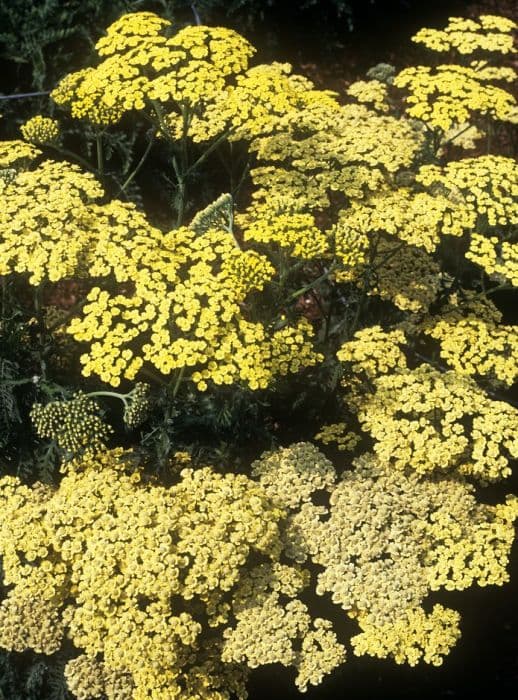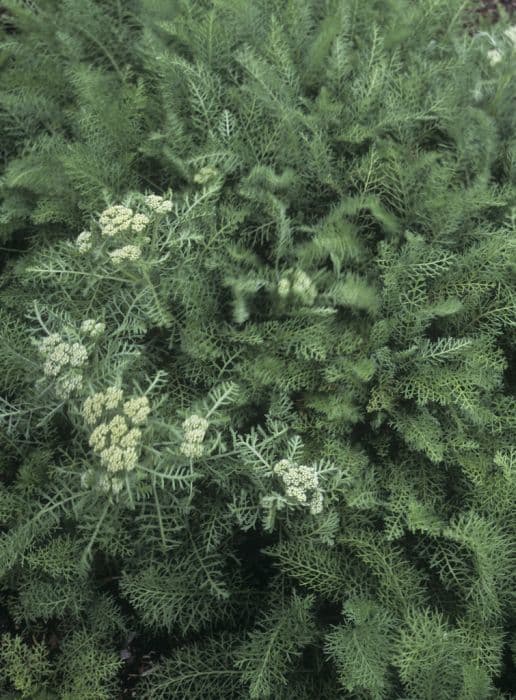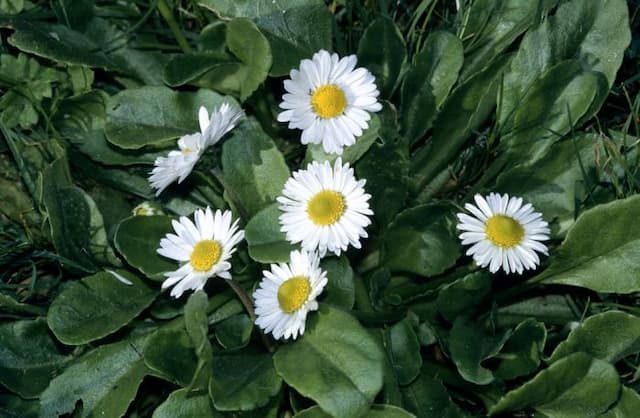Mountain arnica Arnica montana

ABOUT
Arnica montana, commonly known as arnica, is a perennial plant that features vibrant yellow or orange-yellow daisy-like flowers with a raised central part composed of disc florets and surrounded by ray florets that give the bloom its characteristic appearance. The leaves are bright green, and they form a basal rosette at the ground level. Each leaf is ovate and sometimes slightly toothed, but the majority of them present a smooth margin. From this basal rosette, one or more flowering stems rise and they are typically covered with fine, downy hairs which may give them a slightly fuzzy appearance. The stems are straight and support the individual flowers at their tops. Arnica blooms have a contrasting dark green backdrop because of the bracts—small leaf-like structures—that encircle each inflorescence. The seeds are small and contained within achenes, which are dry, one-seeded fruits that do not open at maturity, attached to the center of the spent flower head.
About this plant
 Names
NamesFamily
Asteraceae
Synonyms
Mountain Arnica, Leopard's Bane, Wolf's Bane, Mountain Tobacco, European Arnica
Common names
Doronicum arnica, Doronicum arnicense, Doronicum oppositifolium, Doronicum plantaginis, Arnica alpina, Arnica helvetica, Arnica petiolata, Arnica plantaginis, Cineraria plantaginis
 Toxicity
ToxicityTo humans
Arnica, specifically Arnica montana, is known for its medicinal properties when used topically in small amounts; however, it is considered toxic if ingested. Consuming Arnica can lead to severe gastrointestinal distress, including stomach pain, vomiting, and diarrhea. Additionally, it can cause organ damage, heart irregularities, increased bleeding, and nervous system effects like dizziness and tremors. High doses can even result in death due to cardiac arrest or organ failure.
To pets
Arnica, particularly Arnica montana, poses similar risks to pets as it does to humans when ingested. It can cause vomiting, diarrhea, weakness, heart issues, and nervous system problems in animals such as dogs and cats. Consumption of Arnica by pets should be treated as a serious matter and veterinary care should be sought immediately due to the risk of toxicity and the potential for life-threatening consequences.
 Characteristics
CharacteristicsLife cycle
Perennials
Foliage type
Deciduous
Color of leaves
Green
Flower color
Yellow
Height
1-2 feet (30-60 cm)
Spread
1 foot (30 cm)
Plant type
Herb
Hardiness zones
5
Native area
Europe
Benefits
 General Benefits
General Benefits- Insect repellent: Arnica montana has properties that can discourage insects, making it valuable for natural pest control.
- Soil improvement: Arnica can help enrich the soil with nutrients as it decomposes, benefiting other plants in the vicinity.
- Pollinator attraction: Arnica montana flowers are known to attract bees and other pollinators, which are crucial for the health of ecosystems.
- Landscape aesthetics: With its bright yellow flowers, Arnica montana adds color and beauty to natural landscapes and gardens.
- Companion planting: Because of its insect-repelling properties, Arnica montana can be beneficial when planted alongside other plants that are susceptible to insect pests.
 Medical Properties
Medical Properties- Anti-inflammatory: Arnica montana has traditionally been used to reduce inflammation and swelling associated with bruises, sprains, and aches.
- Analgesic: It is also known to have pain-relieving properties, which can help ease the pain of injuries or inflammation.
- Antimicrobial: Some components of Arnica montana, such as thymol, have been shown to have antimicrobial activity.
- Antiecchymotic: Arnica is commonly used to prevent or treat ecchymosis (skin discoloration resulting from bruising).
- Immunostimulant: There are claims that Arnica can stimulate the immune system, although more research is needed to substantiate this.
 Air-purifying Qualities
Air-purifying QualitiesThis plant is not specifically known for air purifying qualities.
 Other Uses
Other Uses- Arnica montana can be utilized as a natural yellow dye for fabrics and crafts due to its vibrant yellow flowers.
- The plant's flower essence is used in aromatherapy to invoke emotional resilience and balance.
- In the past, Arnica montana has been used as a flavoring agent in some regional European cuisines, adding a bitter taste to certain dishes.
- Gardeners plant Arnica montana to attract beneficial insects, such as bees and butterflies, which are essential pollinators.
- Arnica montana is sometimes included in floral arrangements for its bright, eye-catching flowers, despite its short vase life.
- The flowers can be used as a natural potpourri ingredient to impart their scent to a room when dried.
- Arnica montana may be grown as a companion plant in gardens to deter pests due to its strong fragrance and certain phytochemicals it contains.
- In historical art, Arnica montana has been used as an emblem or a symbol of healing in paintings or tapestries.
- Environmental education programs may use Arnica montana as a case example of a plant that thrives in alpine or mountainous ecosystems.
- Its striking appearance makes Arnica montana a subject for botanical illustration and photography, which are used in educational materials and art.
Interesting Facts
 Feng Shui
Feng ShuiArnica is not used in Feng Shui practice.
 Zodiac Sign Compitability
Zodiac Sign CompitabilityArnica is not used in astrology practice.
 Plant Symbolism
Plant Symbolism- Healing and Restoration: Arnica montana, commonly known as Arnica, is widely renowned for its medicinal properties, particularly in reducing inflammation and healing bruises. It symbolizes the body's ability to recover and the process of restoring health.
- Protection: Due to its use in natural remedies, Arnica is often seen as a symbol of protection against illness and physical harm. It represents safeguarding one's well-being.
- Renewal: As a plant that can help to heal and rejuvenate the skin and body, Arnica symbolizes renewal and the idea that one can bounce back from adversity.
 Water
WaterMountain Arnica requires even moisture and should not be allowed to dry out completely. It's best to water this plant deeply once a week, providing about 1 gallon of water per square foot of soil area. Adjust the watering frequency to account for rainfall and changes in weather conditions. Overhead watering is beneficial in the morning to help hydrate the plant and prevent the leaves from staying wet overnight, which can lead to fungal diseases. Be cautious not to overwater, as Mountain Arnica is sensitive to waterlogged soils.
 Light
LightMountain Arnica thrives best in full sunlight to partial shade. The ideal spot for the plant is an area that receives at least six hours of direct sunlight per day, although it can tolerate some light afternoon shade. Avoid placing it in deep shade, as this will inhibit its growth and flowering.
 Temperature
TemperatureMountain Arnica prefers temperature conditions between 60°F and 70°F and should not be exposed to temperatures below 50°F for extended periods. The plant can tolerate brief dips in temperature but may suffer in prolonged cold or frost conditions. Summer temperatures that exceed 75°F could stress the plant, particularly if nighttime temperatures do not drop significantly.
 Pruning
PruningPrune Mountain Arnica to remove spent flowers and encourage a second bloom. Deadheading the faded flowers can be done throughout the blooming season. Cutting back the plants in early spring or after the first flush of flowers can promote bushier growth. Pruning is typically done as needed and is not an intensive part of Mountain Arnica care.
 Cleaning
CleaningNot needed
 Soil
SoilMountain Arnica requires well-draining, loamy soil with a pH ranging from 5.5 to 6.5. A soil mix of two parts peat, one part perlite, and one part compost is suitable for its growth. Ensure the soil is also rich in organic matter.
 Repotting
RepottingMountain Arnica does not typically require frequent repotting. It should be repotted once every 2-3 years or when it outgrows its current container, ensuring minimal disturbance to its roots.
 Humidity & Misting
Humidity & MistingMountain Arnica thrives best in moderate to high humidity levels. Aim for a humidity level between 40% to 70% to maintain optimal health and growth for the plant.
 Suitable locations
Suitable locationsIndoor
Place in well-drained soil; bright, indirect light; cool temps.
Outdoor
Choose a sunny spot with well-draining soil; protect from hot midday sun.
Hardiness zone
3-9 USDA
 Life cycle
Life cycleArnica montana, commonly known as mountain arnica, begins its life cycle as a seed, which, when conditions are favorable, germinates to develop a small root system and shoots. The seedling grows into a vegetative plant with a rosette of leaves near the ground and sends up one or more flowering stems. Upon reaching maturity, Arnica montana produces yellow, daisy-like flowers in the summer, which are pollinated by insects, primarily bees. After pollination, the flowers develop into seed heads containing multiple small, brown seeds. These seeds are dispersed by wind, and those that land in suitable conditions will germinate, continuing the cycle. During winter, the plant survives as a perennial through underground rhizomes, which will produce new growth in the following spring.
 Propogation
PropogationPropogation time
Spring to early summer
Propogation: Arnica montana, commonly known as mountain arnica, is typically propagated by seeding. The best time to start this process is in the spring after the last frost when the soil temperatures have warmed up sufficiently. To propagate arnica by seeds, first, you need to obtain high quality, viable seeds. These seeds can be sown directly into the garden where you'd like the plants to grow or started indoors in seed trays with well-draining seed starting mix. Seeds should be lightly covered with soil as they require some light for optimal germination, and you should keep the soil moist but not waterlogged. Germination can be irregular and may take several weeks, so patience is important. Once seedlings have developed their first true leaves and have grown sturdy enough, they can be transplanted to their final growing location, spacing them about 12 inches (roughly 30 centimeters) apart to allow for ample growth.









